Top 7 Interesting Facts about Killer Whales
The killer whale, also known as the great black dolphin or orca (orcinus orca) is a species of dolphin in the suborder of toothed whales, related to the ocean ... read more...dolphin. This is the largest whale subspecies in the family. Killer whales live in all the world's oceans, from the Arctic and Antarctic oceans to the warm tropical seas. Killer whales are flexible, agile, and an intelligent predator. Some eat fish, some hunt marine mammals such as sea lions, seals, whales and even great white sharks are also victims of it. It is the apex predator in the ocean and has no worthy natural enemies but humans. Here are some interesting facts about Killer Whales you may not know.
-
Killer whales are typically black on the back, white on the chest and flanks, and a patch of white above and behind the eyes. Newborn calves are yellow or light orange, gradually turning white as they mature. It has a heavy but powerful body, with a large dorsal fin up to 2 m high. The area behind the forearms is dark gray extending to the back. The back of an Antarctic killer whale is white to light gray. Adult killer whales are very different and cannot be confused with any other marine life.
Killer whales are the "nightmare" of dolphins in general (their kind in theory). Although also agile and extremely intelligent, there are very few cases of poor dolphins escaping the jaws with more than 50 sharp teeth of these professional killers. Besides dolphins, another fierce sea god, which possesses remarkable strength and is also exceptionally intelligent but still becomes a high-protein meal for killer whales, is the great white shark - one of The most ferocious fish in the ocean.
It can be said that killer whales are the top predators of the ocean, meaning they themselves do not have any enemies in the wild. They are intelligent, strong, agile, and extremely skillful. Perhaps the number one enemy of killer whales on earth is just humans.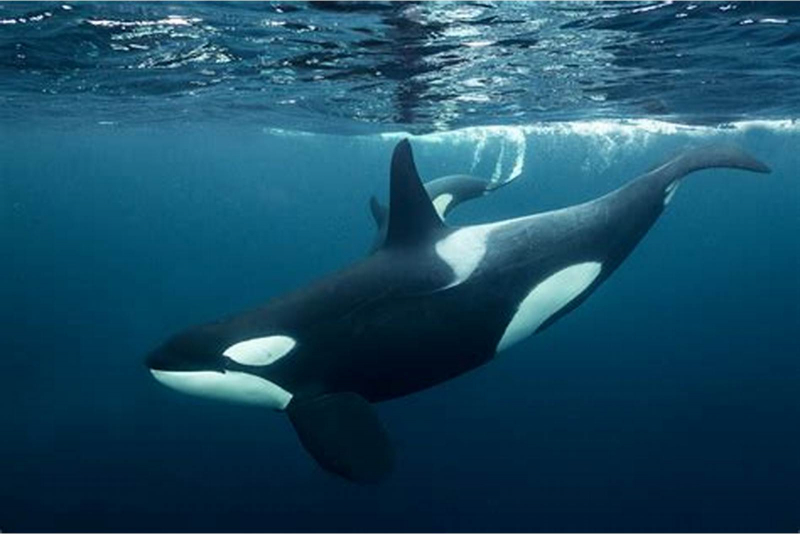
Source: raphaelstuder.com 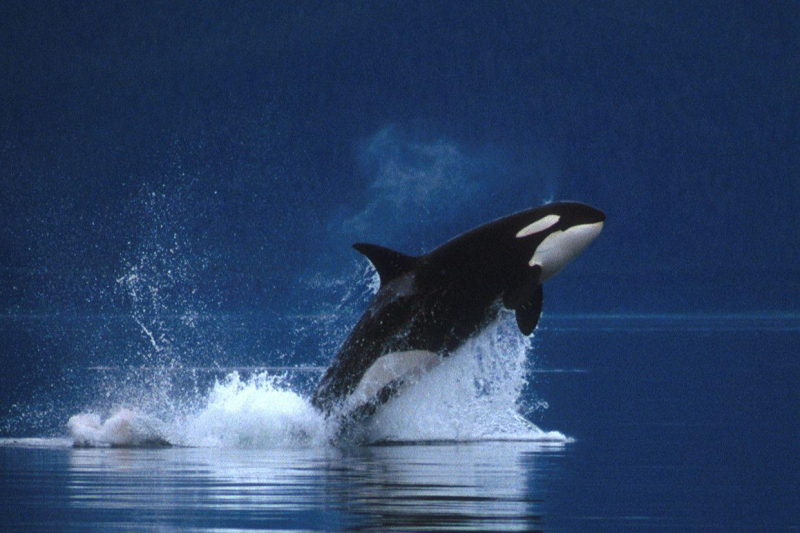
Source: Wallpaper Cave -
Perhaps the killer whale should be nicknamed as the boggart of the ocean because they are extremely fond of hunting and eating young, from seals, sea lions to even baby sperm whales. Killer whales are especially fond of attacking young humpback whales. By hunting in packs (usually an entire family of 3-5 or even two families combined), they separate the baby whale from the mother and then continuously "act" terrible headbutts, attacking humpback whales until it dies.
Perhaps it is for this reason that nearly all species of giant sperm whales dislike killer whales. If you regularly monitor, you will not be surprised to see that humpback whales or blue whales often actively attack killer whales, and of course not to eat meat because their main food is animals. molluscs and small fish, but rather to protect the killer whale's own prey, true to the saying "the enemy of your enemy is your friend". According to statistics, up to 87% of humpback whales appear when the opponent is hunting and 89% of humpback whales are present at the right time when killer whales are attacking other animals.
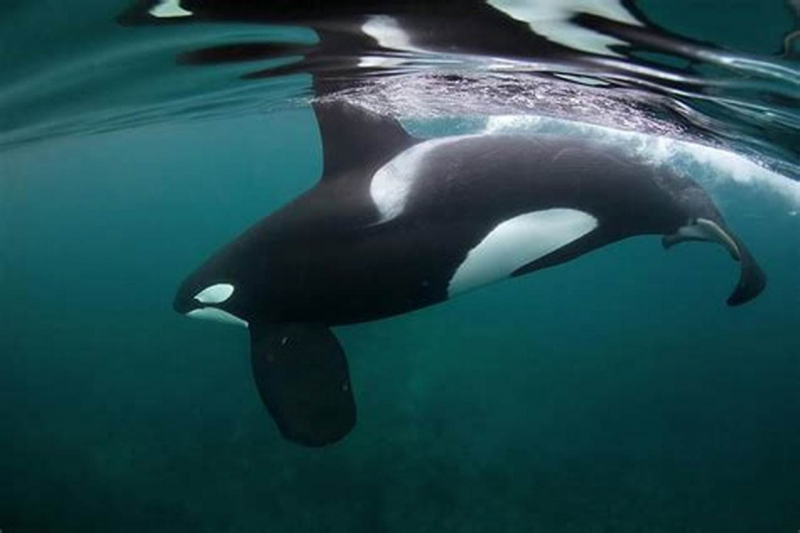
Source: tumblr.com 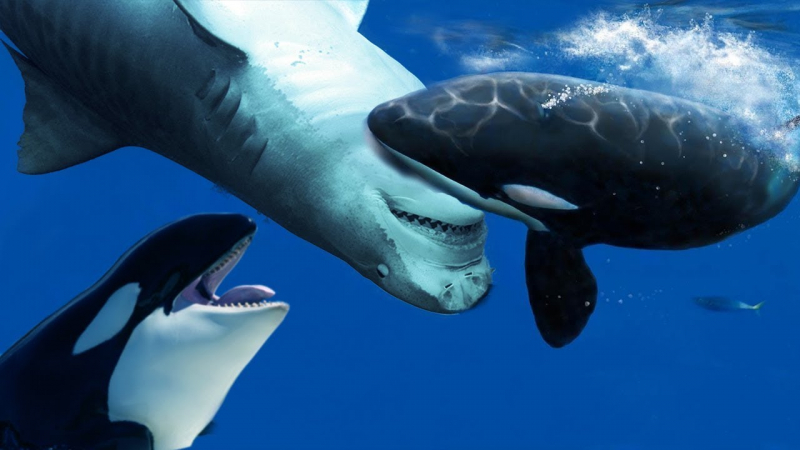
Source: YouTube>Origins Explained -
Killer whales are famous for their group hunting tactics and know how to plan perfectly in many situations. Not only that, they also possess very complex and extremely effective finishing techniques. One of them is the "super move" karate chop. Oceanographer Dr Ingrid Visser, who has studied killer whales' predatory behavior for more than 20 years, describes this tactic as follows:
- The killer whale will use its powerful tail to "drive" the shark close to the surface of the water.
- They don't even touch the shark, but only use the thrust from the tail, creating an underground wave that pushes the shark up to the surface of the water.
- After the shark has been pushed to the surface, the killer whale will immediately swing, roll up out of the water and use its tail to cut down on the head of the prey, making it dizzy, even unconscious.
In addition, killer whales also have another secret technique used to hunt great white sharks, extremely simple but surprisingly effective, that is headbutting. After detecting prey, the killer whale will gain momentum and ram the opponent with terrifying force, or stealthily approach the shark from directly below and suddenly launch an attack in the direction. belly. Before the hit from the "meat block" weighing no less than 4 tons, the great white shark will be stunned. Next, the killer whale simply grabs the ill-fated shark, flips it over, and enjoys its protein-rich meal. The scary thing here is that the killer whales have very well understood the biological weakness of the shark and made perfect use of it.
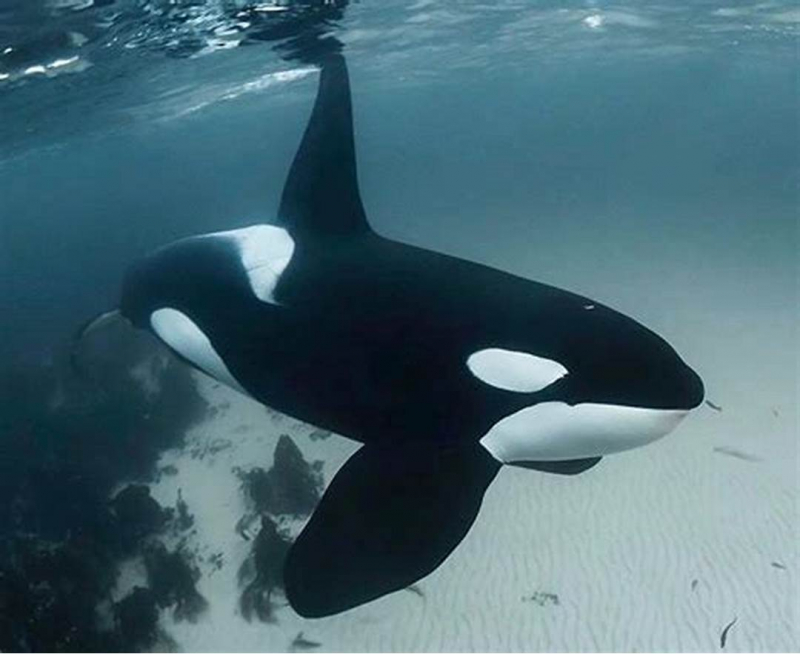
Source: Pinterest 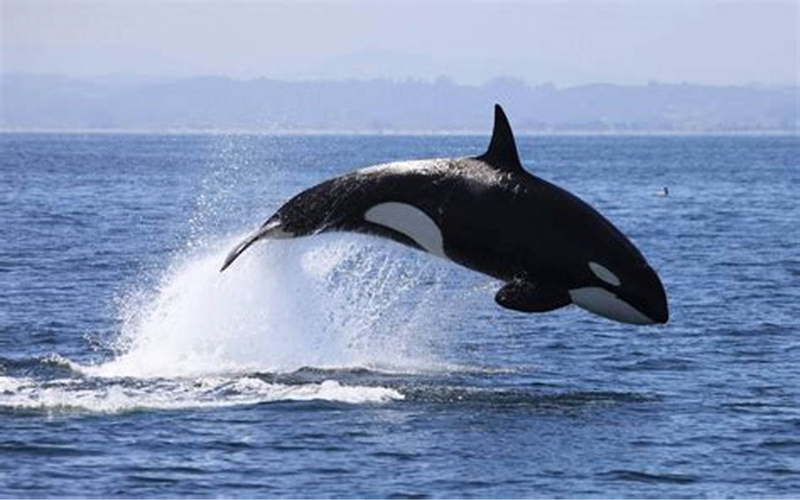
Source: kipmu.ru -
Humans are the dominant species on the planet. We easily tame the largest animal on the earth: Turn elephants into circus performers or effective assistants for heavy work. In the ocean, humans have hunted sperm whales - the largest fish on the planet for hundreds of years, even putting some whale species on the brink of extinction, and killer whales are no exception.
Killer whales are very intelligent, but they are certainly not as intelligent as humans. As a result, many killer whales have perished at the hands of humans, throughout the hundreds of years of fishing and maritime history. In just three years, from 1978 to 1981, up to 346 killer whales were exterminated off the coast of Norway. This number only stops when there is a ban from the Local Government.
The lucky survivors never seem to forget that, and as mentioned, killer whales are smart enough to learn from the events they experience in their lives. A pod of killer whales is usually led by an adult female, and scientists believe it was this "wise mother" who passed on her bloody experiences to other members of the herd. knowing how to recognize and stay away from fishing boats.
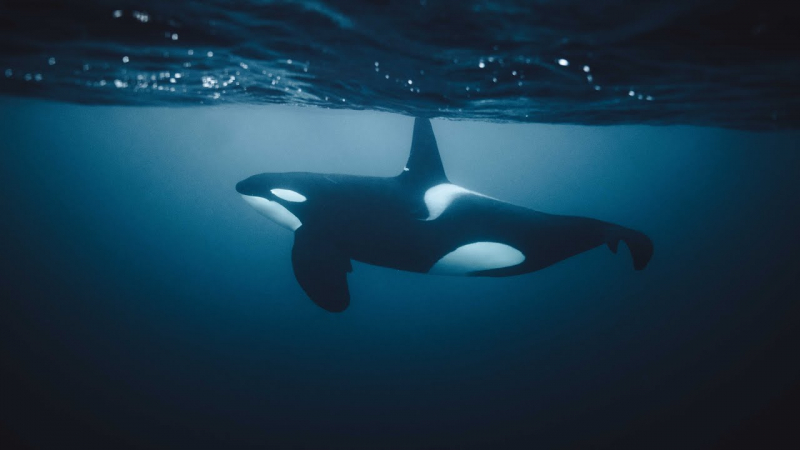
Source: YouTube 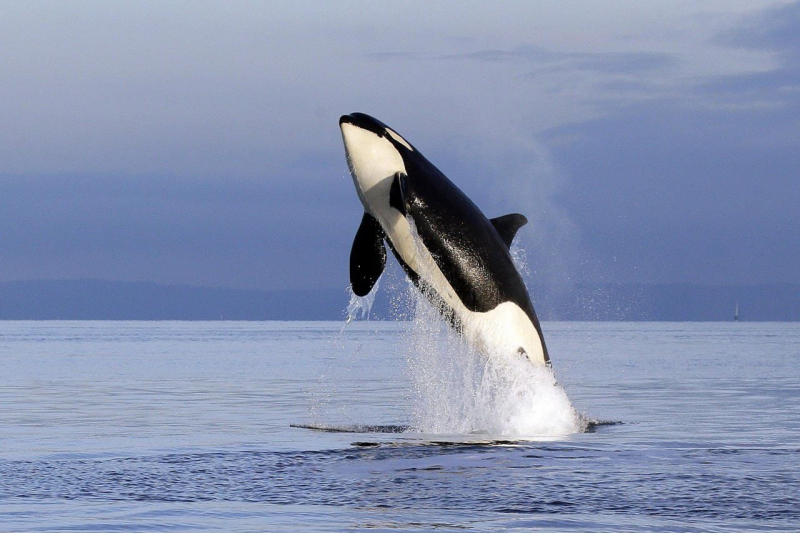
Source: adwallpapers.xyz -
Speaking of the interoperability between herd members, there is a lot of evidence that killer whales are extremely affectionate with their fellow humans, unlike many other animals.
Killer whales swim with at least 5 different groups of orcas, and the interesting thing is that all of them love and care for this injured fish - an extremely rare thing in the animal world because there are always Competition between populations and injured individuals are often left to die. Once, the team witnessed an emotional scene: two killer whales breaking waves in the sea, and each holding a large herring in its mouth for the injured.
Killer whales are extremely social creatures, more so than any other animal on the planet except humans. That is the reason why killer whales often run aground in groups, because when one member accidentally swims into shallow water and runs aground, the other members of the group will not abandon it and find a way. rescue".

Source: YouTube>BBC Earth 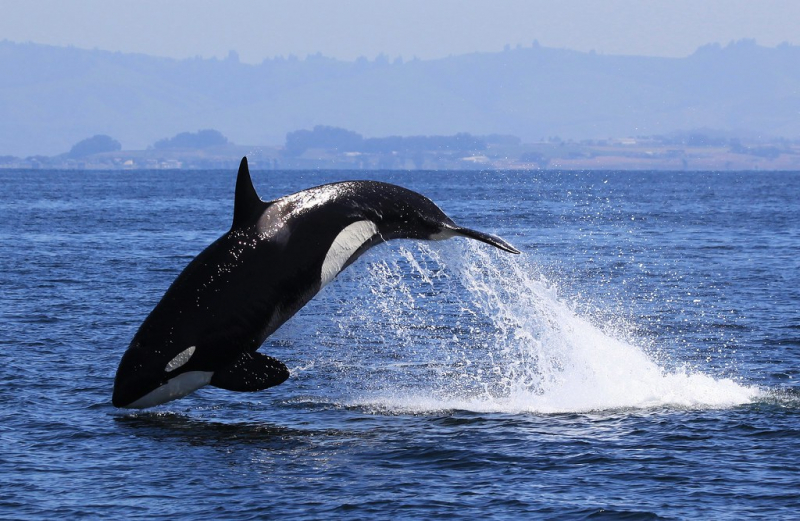
Source: Flickr -
Scientists believe that the color streaks on the body of killer whales can help them evade and attack prey. Their backs are black and their bellies white. When other animals look down on this powerful predator from above, they look like a sea dog standing on an iceberg. They may not even be recognized because the whale's black back is intertwined with the water below.
Killer whales are the top carnivores, meaning they themselves have no enemies in the wild. They can eat small fish, but can also eat baby whales and great white sharks, which are the most aggressive fish in the ocean.
On the other hand, the killer whale's white underbelly mixes with the light falling from the sea surface and this makes it even more difficult for other animals to recognize them. This ingenious camouflage means that prey such as fish, penguins and seals will ignore the lurking danger and continue on their way, then these ill-fated animals will become Killer Whale's meal at any time.

Source: daytripdrea.com 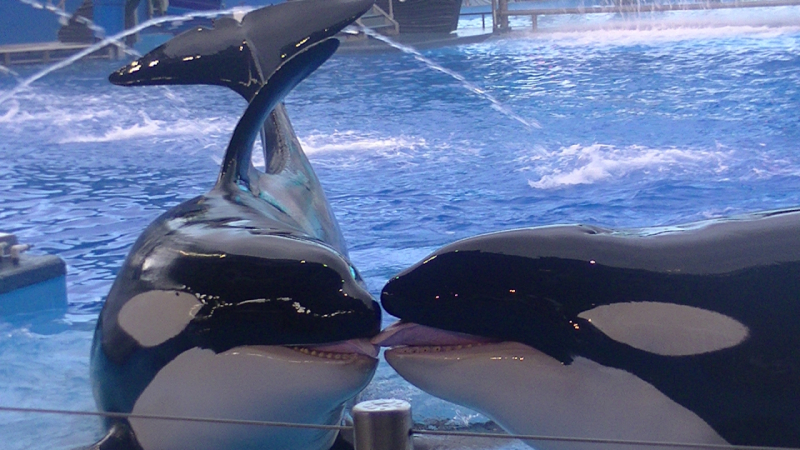
Source: YouTube>Tilikum16 -
Female killer whales reach maturity at the age of 15, after which they enter a period of estrous cycle and a period of no cycles between 3-16 months. The gestation period is from 15-18 months. To avoid inbreeding, males and females mate from other flocks. The mother who is raising her child, always has only one child, about one in 5 years.
Females breed until about 40 years of age, which means that on average they raise five young. The average life expectancy of the females is about 50 years old, the maximum can be up to 80-90 years old. A female named Granny (J2) is estimated to be around 103 years old.
Males reach sexual maturity at the age of 15, but usually mate at the age of 21. The average lifespan of males is about 29 years, with a maximum of 50-60 years. A male named Old Tom appeared every winter in New South Wales, Australia between the 1840s and the 1930s and was about 90 years old.
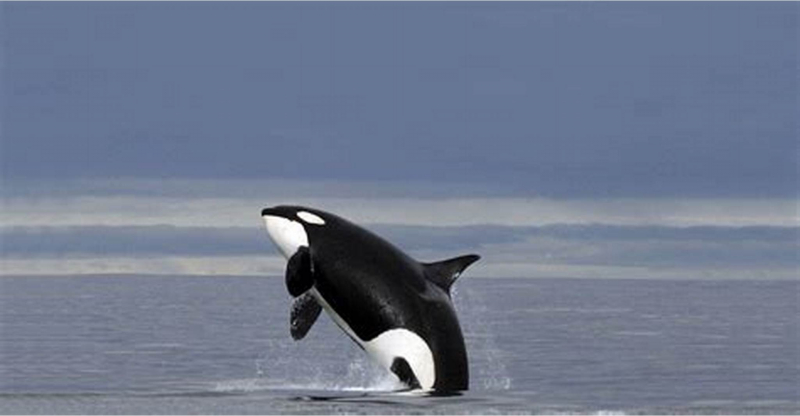
Source: tourmega.com 
Source: orlandoinformer.com




























